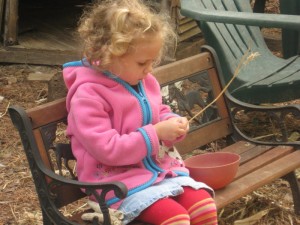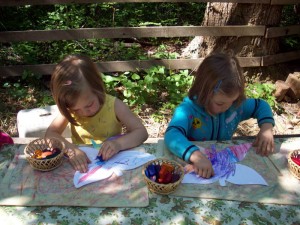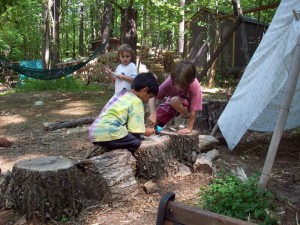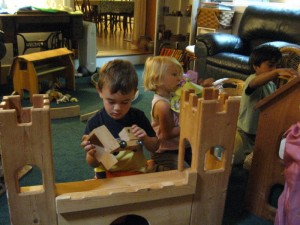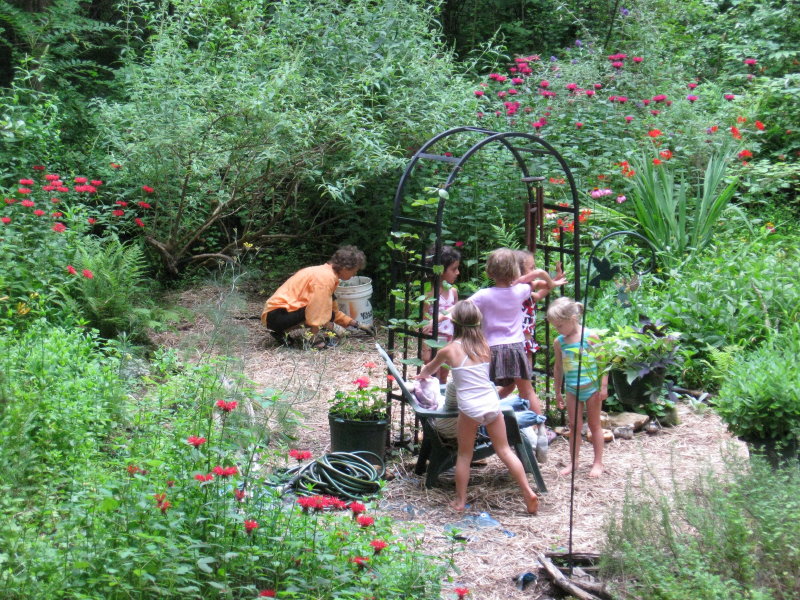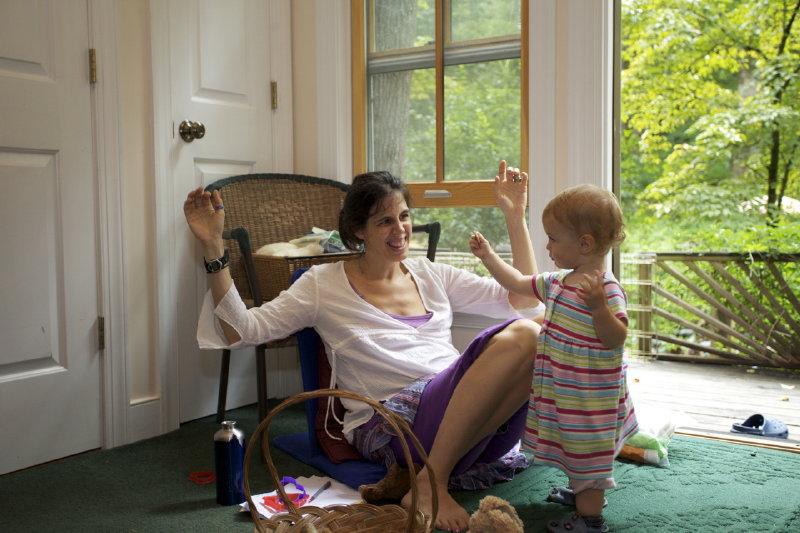Here is a quote from Heaven on Earth’s chapter about creative play:
In thinking of the young child’s free creative play materials, a fitting motto we can keep in mind is, “Anything can be anything.” But what does that mean? Children need play materials that are open-ended enough to meet new needs each day, to fill the demands of their imagination. A toy needs to be “unformed” enough to be reasonably used as many things, in many circumstances. For instance, a red fire truck, with a remote control, will always be destined to be just that. But a simple, open-bed wooden truck can be a fire truck, a farm vehicle, a bus, a lumber wagon, or even a truck that floats on water! Or, better yet, an open basket can be a bed, a suitcase, a grocery bag, a hat, or, when turned upside down, a mountain, a prison, a cave, a hiding place ?.?.?. anything can be anything!
Yesterday on The Rose Garden playground we were surprised and delighted by this principle in-action. Sitting on the tree stumps was a small group of musicians, busy singing, tapping their feet and strumming banjos, mandolins and guitars. In the corner, the old wooden ladder had been laid down to become a rocket ship. Comfortable reclining chairs for the space-explorers were under construction. Beside the porch, a group of mothers attended their babies, giving them baths in the large bucket. Occasionally we were asked to baby-sit the fresh-scrubbed babies so grocery shopping could be done. What is the magic, what is the common thread here? Banjos, mandolins, guitars, as well as comfy chairs for the rocket ship and even the darling babies themselves, all of these remarkably different playthings were….the playground boards! The absolute wonder, the vast breadth of the young child’s imagination lies waiting for us to allow enough time and enough open-ended “toys” for it to blossom. Toys: sticks, pine cones, boards, bricks, lawn-mower tires, rope, pieces of slate, bales of hay, un-baled hay, piles of leaves….you get the idea!